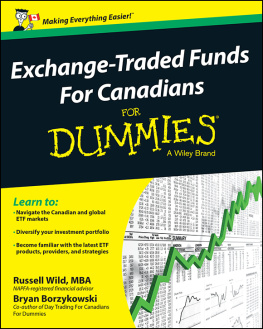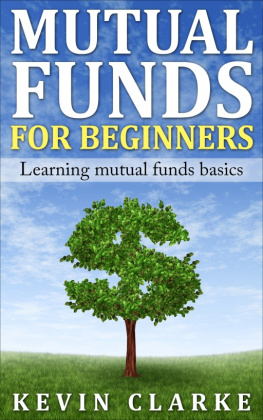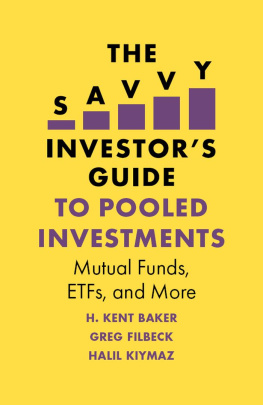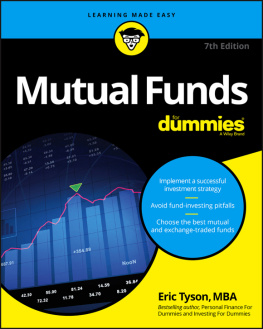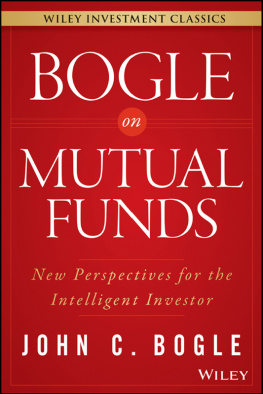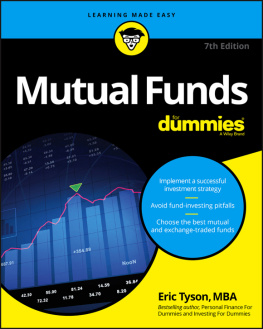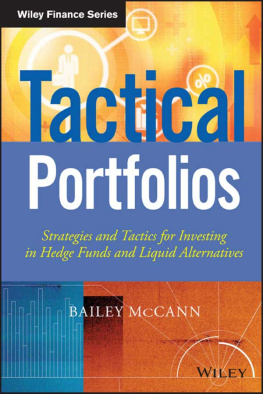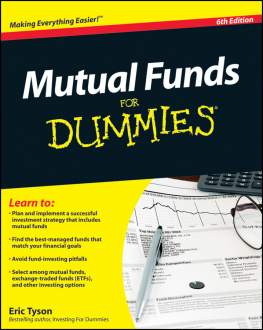
Copyright 2014 by Norman E. Mains. All rights reserved. Except as permitted under the United States Copyright Act of 1976, no part of this publication may be reproduced or distributed in any form or by any means, or stored in a data base or retrieval system, without the prior written permission of the publisher.
ISBN: 978-0-07-183070-6
MHID: 0-07-183070-7
The material in this eBook also appears in the print version of this title: ISBN: 978-0-07-183069-0, MHID: 0-07-183069-3.
eBook conversion by codeMantra
Version 1.0
All trademarks are trademarks of their respective owners. Rather than put a trademark symbol after every occurrence of a trademarked name, we use names in an editorial fashion only, and to the benefit of the trademark owner, with no intention of infringement of the trademark. Where such designations appear in this book, they have been printed with initial caps.
McGraw-Hill Education ebooks are available at special quantity discounts to use as premiums and sales promotions or for use in corporate training programs. To contact a representative, please visit the Contact Us page at www.mhprofessional.com.
TERMS OF USE
This is a copyrighted work and McGraw-Hill Education and its licensors reserve all rights in and to the work. Use of this work is subject to these terms. Except as permitted under the Copyright Act of 1976 and the right to store and retrieve one copy of the work, you may not decompile, disassemble, reverse engineer, reproduce, modify, create derivative works based upon, transmit, distribute, disseminate, sell, publish or sublicense the work or any part of it without McGraw-Hill Educations prior consent. You may use the work for your own noncommercial and personal use; any other use of the work is strictly prohibited. Your right to use the work may be terminated if you fail to comply with these terms.
THE WORK IS PROVIDED AS IS. McGRAW-HILL EDUCATION AND ITS LICENSORS MAKE NO GUARANTEES OR WARRANTIES AS TO THE ACCURACY, ADEQUACY OR COMPLETENESS OF OR RESULTS TO BE OBTAINED FROM USING THE WORK, INCLUDING ANY INFORMATION THAT CAN BE ACCESSED THROUGH THE WORK VIA HYPERLINK OR OTHERWISE, AND EXPRESSLY DISCLAIM ANY WARRANTY, EXPRESS OR IMPLIED, INCLUDING BUT NOT LIMITED TO IMPLIED WARRANTIES OF MERCHANTABILITY OR FITNESS FOR A PARTICULAR PURPOSE. McGraw-Hill Education and its licensors do not warrant or guarantee that the functions contained in the work will meet your requirements or that its operation will be uninterrupted or error free. Neither McGraw-Hill Education nor its licensors shall be liable to you or anyone else for any inaccuracy, error or omission, regardless of cause, in the work or for any damages resulting therefrom. McGraw-Hill Education has no responsibility for the content of any information accessed through the work. Under no circumstances shall McGraw-Hill Education and/or its licensors be liable for any indirect, incidental, special, punitive, consequential or similar damages that result from the use of or inability to use the work, even if any of them has been advised of the possibility of such damages. This limitation of liability shall apply to any claim or cause whatsoever whether such claim or cause arises in contract, tort or otherwise.
To my wife, Ginna

Contents

Preface
W hen I was approached to submit an outline to McGraw-Hill for a book, Ill admit that I was a little intimidated. However, after giving the subject a little thought, I realized that my topic, the rise of Liquid, or Investment Company Act of 1940 (40 Act) Alternatives, had mostly occurred during my career in financial markets. Moreover, my various professional positions had given me a somewhat unique vantage point on their creation as one of the most important developments in contemporary financial history. So lets begin at the beginning.
After studying economics as an undergraduate at the University of Colorado in Boulder, I applied to the same school for a PhD program in economics. In hindsight, this was not a very good choice. I earned an MA degree after one year, maintaining nearly straight As in my classes. Unfortunately, I wasnt really learning very much. I was taking graduate-level courses taught by the same professors I had had as an undergraduate. Sure, the reading lists were longer, but the professors didnt have that much new material in their graduate classes. About midway through my second year, I got a lucky break. A visiting professor who liked my work was about to take an endowed chair at the University of Warwick in Warwickshire, England, and he offered to arrange a grant for me if I matriculated into the PhD program there.
Having never been to Europe, I saw this as a great opportunity. I returned to the United States a couple of years later with a good PhD thesis topic but very little actually done on writing the dissertation. Needing a job, I was put in touch with the Securities and Exchange Commissions (SECs) chief economist, who interviewed me for a position on the team assigned to the soon-to-be-underway Institutional Investor Study. Unfortunately, it was a civil service position, so it was going to take about six months to actually get me hired. I was broke, and I needed a job. The SECs chief economist was kind enough to call the chief economist at the mutual fund industrys trade association, the Investment Company Institute (ICI), because he knew that the ICI was looking for an associate economist.
The ICI was a perfect fit for me because my thesis topic was focused on whether mutual fund portfolio managers could augment their investment returns by shifting the riskiness of their portfolios to enhance their investment returns. It is now, by the way, an almost forgotten fact that virtually all the early work in risk measurement and performance management in financial markets was based on the investment results of mutual funds. Why? Because mutual funds published their net asset values on a daily basis, and researchers could build a databases that largely encompassed the industry. Academicians and other researchers could then test various hypotheses via statistical methods on the early computer systems. My thesis convinced me and my external readers at the Wharton School of Business that mutual fund portfolio managers were not very good at predicting overall market swings, but they were much better at identifying undervalued and overvalued equities.
Having completed my PhD thesis, I was then fortunate to be offered a job as a research economist at the Federal Reserve Board in Washington, DC. Rather than focusing on equities, however, the Feds director of research asked me to become the boards senior researcher on the corporate and municipal bond markets. When I protested to him that I really didnt know very much about fixed income, he simply responded, Dont worry, youll learn.
Almost seven years later, I was a senior economist in the Feds U.S. Treasury and agency market when I received an unsolicited telephone call from the individual who created the interest rate futures market at the Chicago Board of Trade (CBOT). He was in the process of organizing a new group at a firm he had just joined, Drexel Burnham Lambert (DBL), and he asked me if I would be interested in creating a research team for DBLs institutional financial futures and options group? It was a big jump to go from the cloistered halls of the Federal Reserve Board to the open-outcry futures markets in Chicago, but financial futures, and later options on futures, were still in their infancy. These financial instruments were not called derivatives in the 1980s but eventually would become one of the major financial markets, not just in the United States, but around the globe.
Next page

